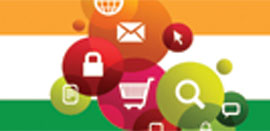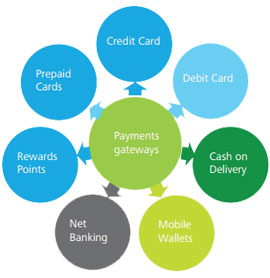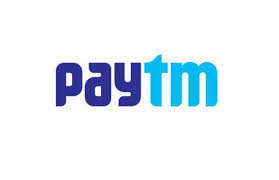 As the Indian financial ecosystem embraces technology for newer advancements and innovations, digital payment systems have started evolving as a robust alternative. The pace of evolution of digital payments and its impact on people is mind-boggling. The advent of digital payments is fuelling India’s e-commerce market which is poised to touch a landmark of $38 billion in this fiscal. With the launch of eNAM, you just don’t know the extent to which the transformation in the way we transact would go in fuelling India’s growth. Vishwas Dass and Poulami Chakraborty of Elets News Network (ENN) present a unique insight into the entire milieu of digital payments in this special spread
As the Indian financial ecosystem embraces technology for newer advancements and innovations, digital payment systems have started evolving as a robust alternative. The pace of evolution of digital payments and its impact on people is mind-boggling. The advent of digital payments is fuelling India’s e-commerce market which is poised to touch a landmark of $38 billion in this fiscal. With the launch of eNAM, you just don’t know the extent to which the transformation in the way we transact would go in fuelling India’s growth. Vishwas Dass and Poulami Chakraborty of Elets News Network (ENN) present a unique insight into the entire milieu of digital payments in this special spread
In the era of digital ecosystem, almost everything related to day-to-day life has become digital which has empowered citizens in a massive way. When we talk about having a digital lifestyle or ecosystem, it implies making everything online—be it payment of utility bills, buying rail, bus, air tickets or sending money to your loved ones from a foreign land in a fraction of seconds. All this has become possible because of cutting edge technology.
Technology has enabled people to do almost everything online without any need of visiting any government institution to pay bills or avail any service. Not only the private entities, but the Government too is pushing out policies to introduce ways to promote payments through cards and digital means.
Emerging Scenarios
It will be a thing of past to insert credit, debit or cash cards to buy something via PoS as payments through Near Field Communication (NFC) is a development that has come into practice. In a tangible near future scenario customers would be able to make payments by flashing their card at the terminal.
This story revolves around the quest as to how technology and latest innovations are revolutionising banking sector which in turn is changing millions of lives globally.
Experts are of the opinion that co-operative banks should be enabled and empowered to exploit technology serving their massive clientele in the rural and remote parts to render valued financial services to them. This would perhaps be the appropriation of the essential spirit of PMJDY and a number of other key objectives on the forefront of financial integrity to fuel India’s growth.
Policy Push
The efficacy of emerging situation can be gauged by the fact that the government is now planning to bring digital payments at par with offline payments and also incentivise to fulfill its ambitious dream of cash-less economy. Experts believe the said efforts would bring down cost of handling cash, increase tax compliance and develop a productive habit in consumers of hassle-free making digital payments.
The Union Cabinet meeting held in February this year, chaired by the Prime Minister Narendra Modi also acknowledged that the promotion of digital payments will be instrumental in reducing tax avoidance, migration of government payments and collections to cashless mode and discourage transactions in cash. The essential features of the proposals for promotion of digital payments include steps for withdrawal of surcharge, service charge, convenience fee on card (digital payments) currently imposed by various Government departments and organisations. Industry has welcomed this move of the Government. CEO of digital payment firm Paytm Vijay Shekhar Sharma said, “Till now consumers were being penalised for paying through their cards or wallets but now usage of digital payment is being motivated”.
The thrust towards cashless economy has surely enabled more effective, low cost corporate financial services, facilitated rapid and seamless payments and increased access to financial services among the hitherto excluded. Many services are being delivered in almost real time like loan approvals and credit assessment. Government’s flagship schemes the Jan Dhan Yojana and Aadhaar have played a key role and given access to millions of people to a debit card and brought them on a digital payment grid. Personalised product design and delivery is also coming to the fore. Banks are increasing their reach in rural and remote parts of the country and are offering financial products and services which were earlier unheard of. All this is opening up the latent potential of the economy in underserved sections and geographies.
KEY OBJECTIVES: CASHLESS ECONOMY
|
Digital Payments boosting e-Commerce
There are five trends which are changing the way India pays. These include— shift to mobile, banking apps, payment wallets, PoS integration with wallets and contactless payments.
A latest study by the industry body— The Associated Chambers of Commerce and Industry of India (ASSOCHAM) shows e-commerce market in India is poised to touch a landmark of $38 billion in India, a staggering 67 per cent surge in over the $23 billion revenues in 2015. The report stated that India is witnessing a year on year growth of around 40 per cent in digital or online transactions. Observers are of the opinion that this is happening majorly because of steep surge in usage of smartphones as well as availability of reliable and all pervasive digital payment platforms.
Smart Phones – The Carriers of Digital Payments
A report by Counterpoint Research states that India has emerged as world’s second largest smartphone market with 2 20 million smartphone users, strongly prompting key businesses to have a mobile first/mobileready platform to cash in on the massive opportunity. Whereas, wallets and banking apps are making people to avoid using credit/debit cards and use the former as A report by Counterpoint Research states that India has emerged as world’s second largest smartphone market with 2 20 million smartphone users, strongly prompting key businesses to have a mobile first/mobileready platform to cash in on the massive opportunity. Whereas, wallets and banking apps are making people to avoid using credit/debit cards and use the former as it facilitates swift checkout experience. Smartphones are ensuring an all pervasive device to undergo digital transactions anytime, anywhere.
The recently released Unified Payment Interface (UPI) has furthered this digitalisation of payments by building upon the existing payments ecosystem. Notably, with an aim to revolutionise mobile banking in the country, the National Payments Corporation of India (NPCI)– an umbrella organisation for all retail payments system in India, on April 11 rolled out UPI. It’s biggest benefit is that it will be a single app for accessing different bank accounts. Anyone who possess an account should be able to send and receive money from their mobile phone with just a virtual address, which will not have any bank account details.
WHAT LURES SHOPPERS TO BUY THROUGH INTERNET
|
 Cooperative Banks – To Lead the Frontier
Cooperative Banks – To Lead the Frontier
The vast array of cooperative banks spread across the nook and cranny of the country hold the key for a cashless economy. The pace and penetration of technological adoption would ensure the future of not just financial inclusion but also the cherished vision of a cashless economy.
Associate Vice President, National Payment Corporation of India (NPCI), V Ratnakar told BFSI Post that if the co-operative banks don’t step into the technology platform today, other top banks would snatch away humongous opportunities from the co-operative banks. “Entire cooperative banking sector is facing this challenge. NPCI has enabled over 540 out of around 2,000 cooperative banks till date. Please wake up to this call of joining a payment system and making your bank more tech savvy. Don’t work in silos, work together. NPCI would cover entire 2,000 cooperative banks at the earliest,” Ratnakar remarked.
Financial Ecosystem 2.0
Years back when the phrase ‘financial ecosystem’ was coined, most of us felt an aura of the not so jazzy, seriousness of what the experts called as the backbone of our economy. Undoubtedly, it is still the same.
Banking today has evolved with modern day standardisation wherein digitisation is playing a much important role and is creating loads of innovation despite being an extremely regulated sector. The concept of brick-andmortar banks and paying frequent physical visits is fast getting obsolete, when cloud and internet captures the entire operation and functioning of the banking domain. Due to the robust technological advancements the core function of the bank “transacting” from source to delivery point has been taken care of by digital payments.
This has in turn laid the foundations of a newer set of entities in the name of Payment Banks which are becoming the hallmarks of the new age financial ecosystem.
Beyond the Brick-and-Mortar Banking
There is no doubt about the transformation being bought by digital payments in the manner the banks operate. Banking today has reached a new level with latest implementation of technologies in its realm. Elements such as mobile banking, SMS banking have been introduced in our financial ecosystem in the recent past and surprisingly, the same have been well adapted with by the citizens. In the present day scenario, people who take to banking have significantly taken up to mobile banking or internet banking and money transaction through modes like IMPS, RTGS NEFT. Unlike visiting to brick-and-mortar bank branches for transacting through their banking accounts.
The adoption of technology in banking sector has not only streamlined all important functions and services in a single thread, but it has also created access to huge set of information and data in the cloud data facilitating anytime, anywhere banking.
As a matter of fact, the acceptability of newer innovations in the banking sector has outgrown its set standards by figure and value. However, it is important that these banks stay competitive in an environmbent where a clutch of payments banks have made a foray—who cannot lend but can borrow up to a limit—will depend on how quickly they tweak their business models; while payment banks are unlikely to be big disruptors in the near term, they may make life just a little difficult for incumbent conventional ones.
The Magical Wand of Wallets
As a matter of fact, with the penetration of all digital channels in the Indian banking sector, the landscape to its relevance has undergone a massive change, altering the methods how transaction takes place. If several market reports are to be believed, the Indian payment market is presently estimated at $15.5 trillion, where mobile banking holds a significant share. In fact, market estimates suggest that the share of mobile banking may rise to 10 per cent from 0.1 per cent in the next seven years with the value increasing 200 times to $3.5 trillion.
While much is being done these days to digitise India, however one of the most important aspects here is to digitise the point of sales. The recent trend in the economy has been a bit bullish on the use case for wallets, as this mode is an easy option for financial transaction for migrants who do not have a bank account or identification documents to establish their credibility. Growing at a very fast pace, currently there are about 140-150 million users in India, who are facilitating payments system through mobile wallet; as compared to the 20 million credit cards in the entire country. Most importantly, this tool is used online for money transfer or recharges, ticket booking and for paying off important utility bills. There is no ubiquity yet, and only when there is real acceptance in brick-andmortar stores will they replace the use of cash. Payment wallet brands are making it simple for retailers, restaurants and other offline businesses to accept payments, easily through apps too.
Businesses can expect their sales to shoot up with traffic driven from the wallets. There’s less friction with mobile wallet payments, where no money exchanges hands implying better security for brick-and-mortar stores, as they don’t have to hold cash on-site and it also gives consumers a better experience at checkout.
HIGHLIGHTS
|
Conclusion
If technology led financial inclusion is likely to be the answer for cost effective, rapid deployment and quality services for the bottom of the pyramid, mobile enabled technology is expected to act as a disruptive catalyst for this growth which the economy needs and wants to witness.
The new bank licenses on universal banks and payments banks will lead to emergence of new business models driving innovation on channels to reach the last mile. Role of mobile based technology solutions being a game-changer cannot be overemphasized.
The direction and vision for a cashless economy duly empowered on the firm foundations of technological layer further emboldened by the spree of innovations would certainly go a long long way in fuelling India’s Growth.
The power to transact would prove to be a turning point in this growth story.
Elets The Banking and Finance Post Magazine has carved out a niche for itself in the crowded market with exclusive & unique content. Get in-depth insights on trend-setting innovations & transformation in the BFSI sector. Best offers for Print + Digital issues! Subscribe here➔ www.eletsonline.com/subscription/





















